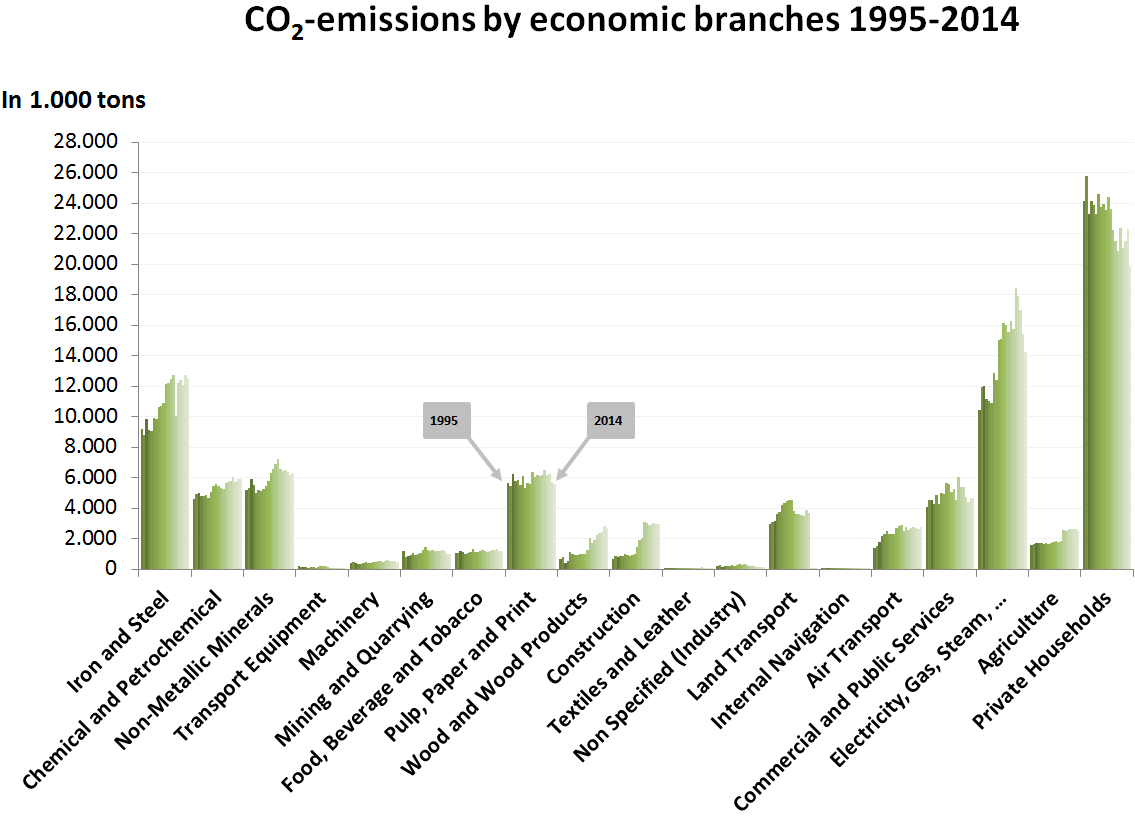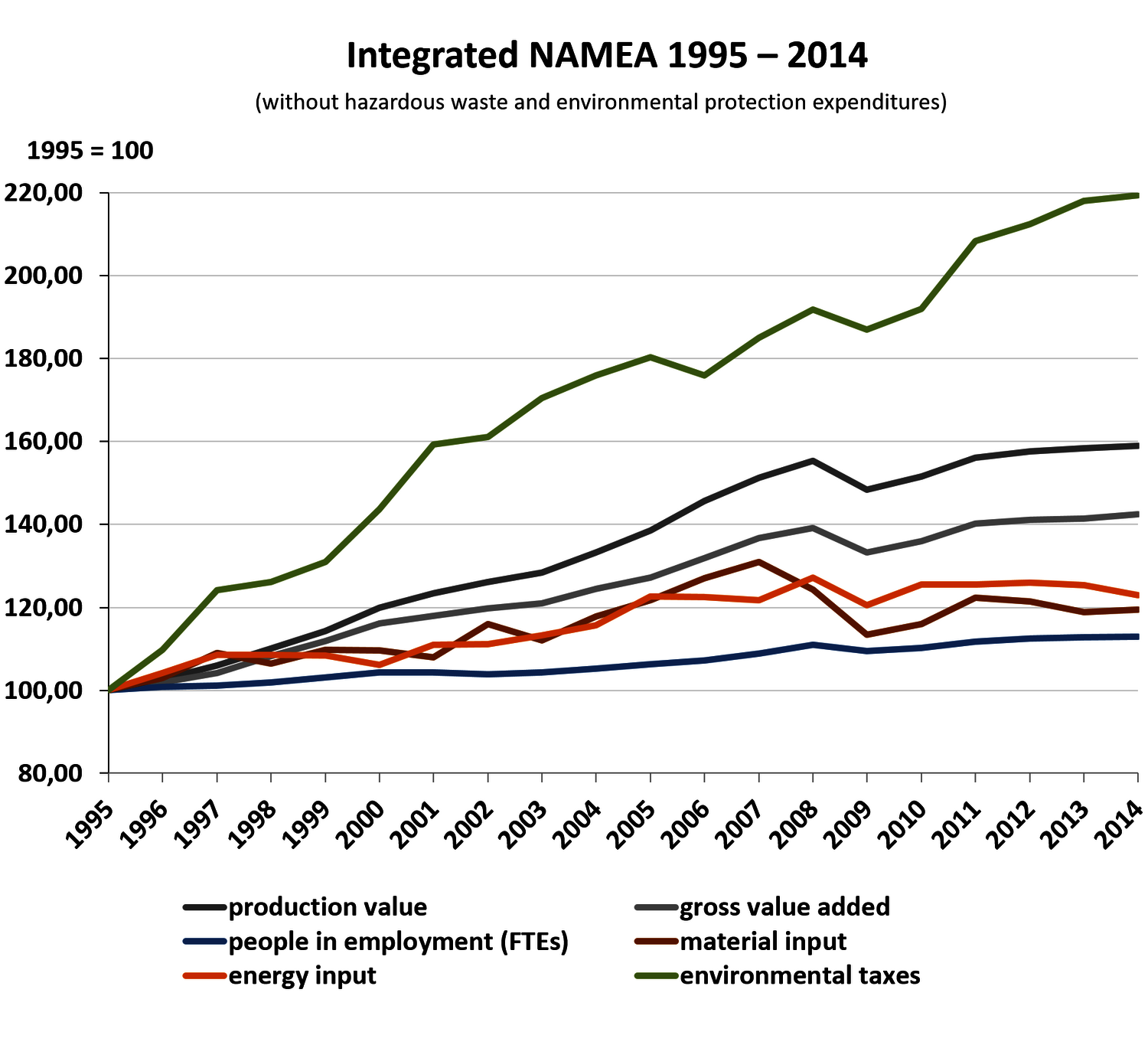Integrated NAMEA
The basic idea behind NAMEA (National Accounting Matrix including Environmental Accounts) is to provide a direct comparison between economic and environmental data by using a standardised structure of economic sectors (ÖNACE classification) and private households.

The aim is to combine widely used economic indicators such as output (GDP) or the number of people in employment with material flows that are of environmental relevance and the environmental expenditures of a particular sector, and thus shift the focus from economic outputs to the raw materials and resources that are consumed and the emissions that arise.
There are two key qualities that such an accounting system should possess, namely compatibility with the national accounting system and harmonisation at international level. The aim is to allocate external environmental and social costs to the polluter, in line with the principles of sustainable development. With this format it should be possible to shift the focus from a purely economic perspective to a system which includes environmental data. An example is given in the following chart.
Integrated NAMEA
While NAMEA in its basic form is concerned with one particular environmental aspect (e.g. NAMEA for air or NAMEA for water), the Austrian integrated NAMEA includes other modules of environmental accounting such as data on material flows or environmental protection expenditures and eco-taxes as well. It therefore provides a comprehensive overview of economic and environmental aspects at economic sector level, and of private households, in a standardised framework.
The economic accounts of the integrated NAMEA cover output (GDP), gross value added and the number of people in employment as full-time equivalents. The following chart shows the developments in Austria over the last few years.
Environmental data consist of the following modules: material input, energy input, air emissions, environmental protection expenditures (for air pollution control and climate mitigation measures as well as for waste management), environmental taxes and waste.


